CG Trader
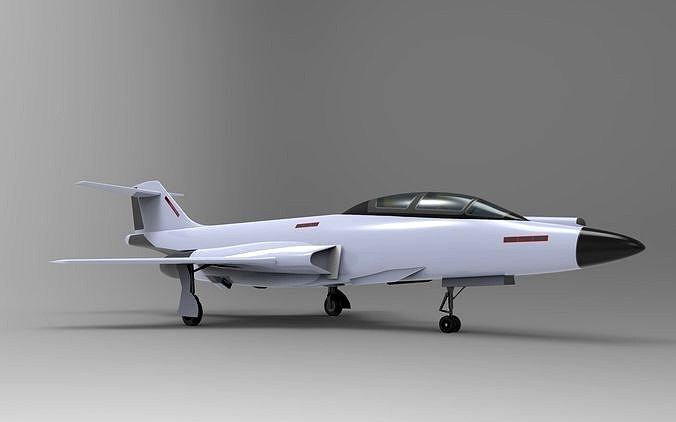
The McDonnell F-101 Voodoo
by CG Trader
Last crawled date: 1 year, 10 months ago
The McDonnell F-101 Voodoo is a supersonic jet fighter which served the United States Air Force (USAF) and the Royal Canadian Air Force (RCAF). Initially designed by McDonnell Aircraft Corporation as a long-range bomber escort (known as a penetration fighter) for the USAF's Strategic Air Command (SAC), the Voodoo was instead developed as a nuclear-armed fighter-bomber for the USAF's Tactical Air Command (TAC), and as a photo reconnaissance aircraft based on the same airframe. An F-101A set a number of world speed records for jet-powered aircraft, including fastest airspeed, attaining 1,207.6 miles (1,943.4 km) per hour on 12 December 1957. They operated in the reconnaissance role until 1979. Delays in the 1954 interceptor project led to demands for an interim interceptor aircraft design, a role that was eventually won by the B model of the Voodoo. This required extensive modifications to add a large radar to the nose of the aircraft, a second crew member to operate it, and a new weapons bay using a rotating door that kept its four AIM-4 Falcon missiles or two AIR-2 Genie rockets hidden within the airframe until it was time to be fired. The F-101B entered service with USAF Air Defense Command in 1959 and the Royal Canadian Air Force in 1961. US examples were handed off to the USAF Air National Guard where they served until 1982. Canadian examples remained in service until 1984. Initial design on what would eventually become the Voodoo began just after World War II in response to a USAAF Penetration Fighter Competition in 1946. This called for a long-range, high-performance fighter to escort a new generation of bombers, much as the North American P-51 Mustang had escorted the Boeing B-17 Flying Fortresses and Consolidated B-24 Liberators in World War II. Several companies responded with designs, and the Air Force provided funds for several of them to produce prototypes. After being awarded a contract (AC-14582) on 14 February 1947, McDonnell built two prototypes, designated the XF-88 Voodoo. The first prototype (serial number 46-6525), powered by two 3,000 lbf (13.3 kN) Westinghouse XJ34-WE-13 turbojets, flew from Muroc on 20 October 1948. Preliminary testing revealed that while handling and range was adequate, the top speed was a disappointing 641 mph (1,032 km/h) at sea level. After fitting McDonnell-designed afterburners to the second prototype, thrust was increased to 3,600 lbf (16.1 kN) with corresponding performance increases in top speed, initial rate of climb and reduced takeoff distance. Fuel consumption was greatly increased by use of the afterburners, however, reducing the range. Although the XF-88 won the fly-off competition against the competing Lockheed XF-90 and North American YF-93, the detonation of the first nuclear weapon by the Soviet Union resulted in the USAF (created in 1947) re-evaluating its fighter needs, with interceptors being more important and bomber escorts being of reduced priority, and it terminated the Penetration Fighter program in 1950. Analysis of Korean War missions, however, revealed that contemporary USAF strategic bombers were vulnerable to fighter interception. In 1951, the USAF issued a new requirement for a bomber escort with all major US manufacturers submitting designs. The McDonnell design was a larger and higher-powered version of the XF-88 and won the bid in May 1951. The F-88 was redesignated the F-101 Voodoo in November 1951. airplane airplane aircraft military aviate airport vehicle jet flight flight fast navy airforce defence patrol fighter plane military aircraft
Similar models
3d_export
$15

McDonnell F-101 Voodoo
...es were handed off to the usaf air national guard where they served until 1982. canadian examples remained in service until 1984.
cg_trader
$15

McDonnell F-101 Voodoo
...re handed over to the usaf air national guard where they served until 1982. the canadian examples remained in service until 1984.
cg_trader
$12

The McDonnell F-101
...f-101 voodoo is a supersonic jet fighter which served the united states air force (usaf) and the royal canadian air force (rcaf).
cults
$6

F4 Phantom Jet fighter
...g-range supersonic jet interceptor aircraft/fighter-bomber originally developed for the united states navy by mcdonnell aircraft.
3dwarehouse
free

McDonnell F-101 Voodoo
...mcdonnell f-101 voodoo
3dwarehouse
supersonic jet fighter #f101 #mcdonnell #voodoo
3dwarehouse
free

Template - McDonnel Douglas XF-85 Goblin Parasite Fighter {309Kb}
...e the program was terminated. #85 #aircraft #airplane #douglas #fighter #goblin #jet #lol #mcdonnel #parasite #template #ugly #xf
grabcad
free

F82 Twin Mustang
...rces were shot down by f-82s, the first being a north-korean yak-11 downed over gimpo airfield by the usaf 68th fighter squadron.
3dwarehouse
free

McDonnell Douglas F-4C Phantom II
...pted by the u.s. marine corps and the u.s. air force, and by the mid-1960s had become a major part of their respective air wings.
3dwarehouse
free

McDonnell Douglas F-4E Phantom II
...pted by the u.s. marine corps and the u.s. air force, and by the mid-1960s had become a major part of their respective air wings.
3dwarehouse
free

McDonnell Douglas F-4E Phantom II
...pted by the u.s. marine corps and the u.s. air force, and by the mid-1960s had become a major part of their respective air wings.
Voodoo
turbosquid
$2

voodoo staff
...uid
royalty free 3d model voodoo staff for download as blend on turbosquid: 3d models for games, architecture, videos. (1635262)
turbosquid
$4

Voodoo Doll
...royalty free 3d model voodoo doll for download as obj and stl on turbosquid: 3d models for games, architecture, videos. (1373342)
3d_export
$5

Voodoo doll
...voodoo doll
3dexport
turbosquid
$60

Voodoo doll
...free 3d model voodoo doll for download as blend, fbx, and obj on turbosquid: 3d models for games, architecture, videos. (1633494)
turbosquid
$55

Voodoo Doll
...free 3d model voodoo doll for download as blend, fbx, and obj on turbosquid: 3d models for games, architecture, videos. (1638224)
turbosquid
$19

Voodoo Doll
...y free 3d model voodoo doll for download as max, 3ds, and obj on turbosquid: 3d models for games, architecture, videos. (1547689)
turbosquid
$10

Voodoo doll
...e 3d model voodoo doll for download as c4d, 3ds, fbx, and obj on turbosquid: 3d models for games, architecture, videos. (1688762)
turbosquid
$49

Voodoo Mask
... available on turbo squid, the world's leading provider of digital 3d models for visualization, films, television, and games.
turbosquid
$2

voodoo doll
... available on turbo squid, the world's leading provider of digital 3d models for visualization, films, television, and games.
3d_export
$5

voodoo doll
... ceepy interior or evil plans . textures of 2048x2048. 1592 polygons , 1580 vertices, 3156 triangles https://youtu.be/1318j1_xawa
Mcdonnell
3d_export
$17

McDonnell Douglas AV-8B Harrier
...mcdonnell douglas av-8b harrier
3dexport
mcdonnell douglas av-8b harrier
cg_studio
$159
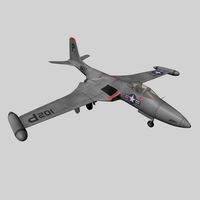
McDonnell F2H Banshee3d model
...d .fbx .lwo .ma .max .obj .xsi - mcdonnell f2h banshee 3d model, royalty free license available, instant download after purchase.
turbosquid
$20

McDonnell Douglas DC-10
... available on turbo squid, the world's leading provider of digital 3d models for visualization, films, television, and games.
cg_studio
$69

McDonnell Douglas T-45-3d model
...raft douglas t-45-
.obj .max - mcdonnell douglas t-45- 3d model, royalty free license available, instant download after purchase.
turbosquid
$50

McDonnell Douglas F4 Phantom II
... available on turbo squid, the world's leading provider of digital 3d models for visualization, films, television, and games.
3d_export
$20

McDonnell Douglas F4 Phantom II 3D Model
...t jet attacker fighter bomber transport air bombrun plane soar
mcdonnell douglas f4 phantom ii 3d model heartbreak 58691 3dexport
3d_ocean
$15
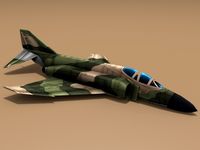
McDonnell Douglas F-4 Phantom II
...m plane run soar transport
low polygon and nicely detailed mcdonnell douglas f-4 phantom ii. check out my profile for more items!
turbosquid
$199
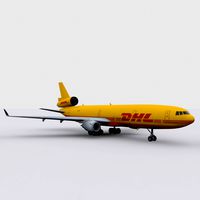
McDonnell Douglas MD-11 Airliner DHL
... available on turbo squid, the world's leading provider of digital 3d models for visualization, films, television, and games.
3d_export
$60

mcdonnell douglas f-15 c eagle
...r 100 victories and no losses in aerial combat, with the majority of the kills by the israeli air force. more schemes availables.
cg_studio
$15

McDonnell Douglas F-4 Phantom II3d model
....max .fbx .dxf .obj - mcdonnell douglas f-4 phantom ii 3d model, royalty free license available, instant download after purchase.
101
turbosquid
$162

101
... available on turbo squid, the world's leading provider of digital 3d models for visualization, films, television, and games.
3d_export
free

knife 101
...knife 101
3dexport
3ddd
$1

101 ковер (6)
...101 ковер (6)
3ddd
101 восточный ковер больного разрешения
3ddd
$1

101 ковер (4)
...101 ковер (4)
3ddd
101 восточный ковер больного разрешения
3ddd
$1

101 ковер (1)
...101 ковер (1)
3ddd
101 восточный ковер больного разрешения
3ddd
$1

101 ковер (5)
...101 ковер (5)
3ddd
101 восточный ковер больного разрешения
3ddd
$1
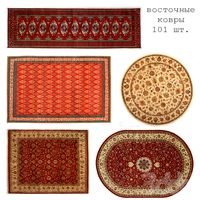
101 ковер (2)
...101 ковер (2)
3ddd
101 восточный ковер больного разрешения
3ddd
$1
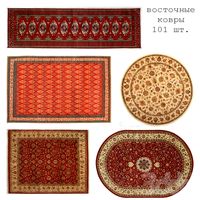
101 ковер (3)
...101 ковер (3)
3ddd
101 восточный ковер больного разрешения
turbosquid
$33

Bed-101
...turbosquid
royalty free 3d model bed-101 for download as max on turbosquid: 3d models for games, architecture, videos. (1220580)
turbosquid
$29
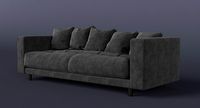
Sofa-101
...urbosquid
royalty free 3d model sofa-101 for download as max on turbosquid: 3d models for games, architecture, videos. (1220829)
F
3ddd
$1
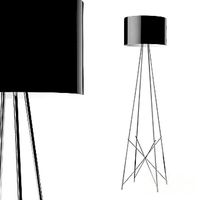
Торшер Ray F. Ray F. Италия
...торшер ray f. ray f. италия
3ddd
flos
торшер ray f. ray f. италия 1280х360
turbosquid
$100

F-16 F block 62
...oyalty free 3d model f-16 f for download as max, obj, and fbx on turbosquid: 3d models for games, architecture, videos. (1310086)
3d_export
free

f-35
...f-35
3dexport
us fighter f-35
3d_export
$5

f 150
...f 150
3dexport
f 150 formats max 3ds obj stl
3d_export
$60

F-600
...f-600
3dexport
f600 fire truck, f600 truck f-600 of 1968
design_connected
$13

Tatou F
...tatou f
designconnected
tatou f computer generated 3d model. designed by urquiola, patricia.
design_connected
$13

Luxmaster F
...luxmaster f
designconnected
luxmaster f computer generated 3d model. designed by morrison, jasper.
design_connected
$10

Tab F
...tab f
designconnected
tab f computer generated 3d model. designed by osgerby , jay.
turbosquid
$30

F-4 and F-35 egg plane
... available on turbo squid, the world's leading provider of digital 3d models for visualization, films, television, and games.
design_connected
$29
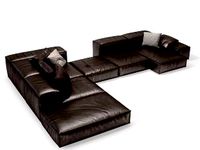
Extrasoft F
...extrasoft f
designconnected
living divani extrasoft f computer generated 3d model. designed by lissoni, piero.
